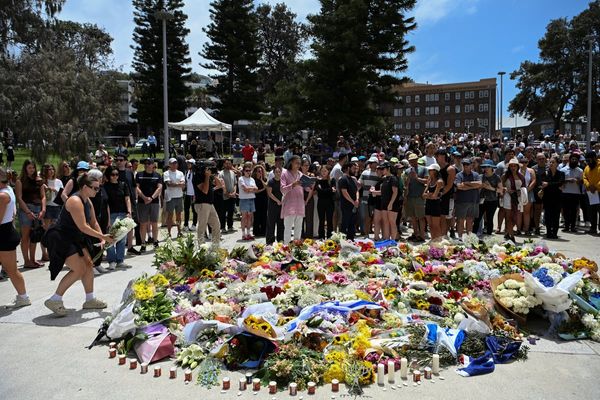
The Coalition’s primary vote has plunged to its lowest level in Newspoll’s history, while support for One Nation has reached the double digits in three separate polls. Meanwhile, Labor has thumped the Liberals to win the NSW Kiama byelection.
The Newspoll conducted September 8–11 from a sample of 1,264 people, showed the Coalition’s primary vote sinking to just 27%, which is the worst since Newspoll began tracking party support in 1985.
Labor’s primary vote support held steady at 36%, while the Greens were at 13% (up one point), One Nation 10% (up one) and all others 14% (up one).
Labor also led the Coalition by 58–42% in the two-party-preferred estimate, a two-point gain for Labor since the August Newspoll.
In August, Prime Minister Anthony Albanese’s net approval reached positive territory for the first time since September 2023. However, he’s now lost eight points for a net approval of -5, with 50% dissatisfied and 45% satisfied.
Here is the graph of Albanese’s net approval in Newspoll with a trend line fitted. Albanese had negative ratings in the lead-up to the 2025 federal election, but Labor won by its largest margin since 1943.
Opposition Leader Sussan Ley also slumped eight points to a net approval of -17. Albanese led as better prime minister by an unchanged 51–31%.
One Nation has gained one point in Newspoll, two points in the Redbridge poll and three points in Resolve. Much of this gain is at the Coalition’s expense, with the Coalition down three points in Newspoll, two points in Resolve and one point in Redbridge.
Labor’s two-party share of 53.5% in the Redbridge poll is its lowest in any poll since the election, but it had 55% support in the Resolve poll and 58% in Newspoll.
The polls no longer understate the support for far-right parties, such as One Nation. In fact, at the 2025 election, the polls overstated support for both the Coalition and One Nation.
The increased support for One Nation will likely give the Coalition a higher share of overall preferences, compared to the 2025 election. However, the Coalition still trails Labor by nine points on primary votes in Newspoll, eight in Resolve and five in Redbridge. The Coalition will need to be about even with Labor on primary votes to be competitive.
Meanwhile, on climate change, 37% of respondents in the Newspoll said Australia should increase its action, 28% said we should slow down our action and 25% stick with current actions.
Resolve poll
A national Resolve poll for Nine newspapers, conducted September 9–13 from a sample of 1,800 voters, gave Labor a 55–45% lead by respondent preferences, a four-point gain for the Coalition since a pro-Labor outlier poll in August.
Primary votes were 35% Labor (down two), 27% Coalition (down two), 12% One Nation (up three), 11% Greens (down one), 9% independents (up one) and 6% others (steady). By 2025 preference flows, this would be about 56–44% to Labor, a one-point gain for the Coalition.
Albanese’s net approval was up one point to -1, with 45% giving him a poor rating and 44% a good rating. In contrast to Newspoll, Ley’s net approval was steady at +9. Albanese led Ley as preferred PM by 38–26% (compared to 41–26% in August).
There was a 29–29% tie between Labor and the Liberals on which party was best for economic management after Labor had led by 34–28% in August. On keeping the cost of living low, the Liberals led by 28–27%, reversing a 32–26% Labor advantage in August.
On the permanent immigration level remaining unchanged at 185,000 people, 49% of respondents said this was too high, 27% said it was about right, and 5% thought it was too low. By 55–21%, respondents thought the government was handling immigration in an unplanned and unmanaged way (compared to 60–20% in May 2024).
However, immigration has low issue salience with just 4% rating it their highest policy priority. Cost of living was rated the highest priority by 40%, far ahead of any other issue.
Redbridge poll
A national Redbridge poll for The Financial Review, conducted from August 19 to September 8 from a sample of 5,326 voters, gave Labor a 53.5–46.5% lead by respondent preferences, a two-point gain for the Coalition since the June Redbridge poll.
Primary votes were 35% Labor (down two), 30% Coalition (down one), 11% Greens (steady), 11% One Nation (up two) and 13% for all Others (up one). By 2025 election flows, Labor would lead the Coalition by just under 55–45%.
Women gave Labor a 55–45% lead, while men gave the party a 52–48% lead.
Morgan polls on Chinese and Indian-born Australians
After Jacinta Nampijinpa Price’s recent controversial comments about Indian Australians, Morgan has released polling results reflecting voting intention for Chinese and Indian-born Australians.
The research used all Morgan polls conducted between July 2023 and June 2025 to get a suitable sample of Chinese and Indian-born Australians (738 and 1,332, respectively).
For Chinese-born Australians, primary votes were 48% Labor, 34% Coalition, 11% Greens, 1% One Nation and 6% for all others. A two-party estimate from the 2025 election preference flows would give Labor above a 61–39% lead.
For Indian-born Australians, primary votes were 45% Labor, 39% Coalition, 8% Greens, 2% One Nation and 6% for all others. A two-party estimate would give Labor about a 56–44% lead.
Labor won the two-party vote at the May 2025 election by 55.2–44.8% and has had a big lead since in national polls. However, for much of the two-year period covered by this poll, Labor fared substantially worse than its 2025 result.
This implies that Chinese and Indian-born Australians are now more favourable to Labor than the Morgan polls reflect.
Labor thumps Liberals in NSW Kiama byelection
At Saturday’s Kiama byelection, Labor’s Katelin McInerney defeated the Liberals’ Serena Copley by 59.2–40.8%, according to The Poll Bludger’s projections. Primary votes were 37.5% Labor (up 2.5% since 2023), 26.2% Liberals (up 14.8%), 10.7% for an independent (new), 8.2% Greens (down 2.7%), 5.1% Shooters (new) and 5.1% Legalise Cannabis (new).
Gareth Ward had held the New South Wales state seat of Kiama for the Liberals from 2011 to 2021. During his 2019–23 term, he was charged with sexual assault and left the Liberals, but retained Kiama as an independent at the March 2023 election, defeating Labor by 50.8–49.2%.
In July, Ward was convicted of the charges and resigned in August just before he would have been expelled by parliament.
At the 2023 NSW election, Labor won 45 of the 93 lower house seats, two short of a majority, and formed a minority government. Winning this byelection takes Labor to 46 seats, one short of majority. The next NSW election will be held in March 2027.
Adrian Beaumont does not work for, consult, own shares in or receive funding from any company or organisation that would benefit from this article, and has disclosed no relevant affiliations beyond their academic appointment.
This article was originally published on The Conversation. Read the original article.







